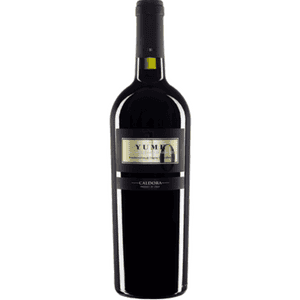
Caldora Montepulciano D'Abruzzo Yume
Product Description
Yume Montepulciano is produced from the best grapes from Chieti. This wine represents hope for a better future with 'Yume' being the word for 'dream' in Japanese. This Montepulciano is ruby red with a garnet rim. Intense, persistent and fruity (red fruits, plum) with hints of vanilla. On the palate full-bodied, tannic and well balanced, intense and persistent. Best Served with salami, rich dishes, meat and cheese.
Brand Description
Caldora is located in Abruzzo on the Adriatic coast and is part of the Farnese Vini group. The name Farnese in the Abruzzo region dates back to 1538 with wine production beginning in 1994. The Abruzzo region is described as an endless vineyard from the mountains to the sea and encompasses two main wine appellations: Teramo and Chieti. Caldora has a special arrangement with several local family-owned vineyards, 1500 hectares in total, in the two coastal provinces of Teramo to the north and Chieti to the south. The vineyards are predominately native varieties such as Montepulciano and Sangiovese with a small selection of international varieties such as Chardonnay. Their award-winning winemaking team carefully selects the best portions of each vineyard depending on the clones, position in the vineyard and age of the vine. They then direct the farming of these vineyard rows to ensure the highest quality grapes.

Explore a World of Spirits and Liquor through our Comprehensive FAQ Section.
Discover a World of Spirits and Liquor in our Helpful FAQ Section.
Types of Spirits
- Whiskey: Made from fermented grain mash and aged in wooden casks.
- Vodka: Typically distilled from grains or potatoes and known for its clear, neutral flavor.
- Rum: Produced from sugarcane byproducts like molasses or sugarcane juice.
- Tequila: Made from the blue agave plant, primarily in the area surrounding Tequila, Mexico.
- Gin: Distilled with botanicals, primarily juniper berries, giving it a distinctive flavor.
Production Process
- Fermentation: The process where yeast converts sugars into alcohol.
- Distillation: Separating alcohol from the fermented mixture to increase its concentration.
- Aging: Storing spirits in barrels to develop flavors over time.
Tasting and Pairing
- Tasting Notes: Learn to identify different aromas, flavors, and textures.
- Food Pairings: Discover which spirits complement various dishes, enhancing the dining experience.
Cocktails and Mixology
- Classic Cocktails: Recipes and techniques for making popular drinks like the Old Fashioned, Martini, and Mojito.
- Mixology Tips: How to balance flavors and create your own cocktail recipes.
History and Culture
Origins: The historical background of different spirits.
Cultural Significance: How spirits are enjoyed and celebrated around the world.

